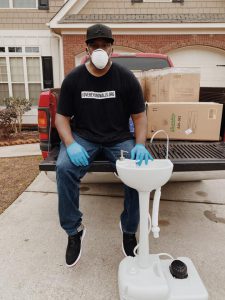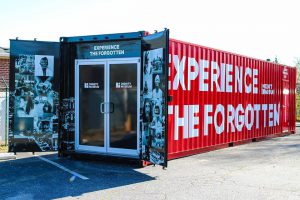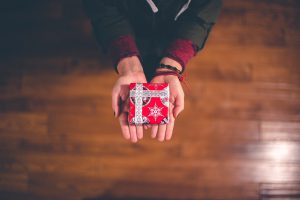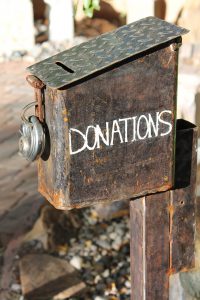It’s easy to take what you have for granted, it’s easy to opt out of putting in the work to take care of ourselves, it’s easy to look at other people and not see them for everything that they are. Tim Boyle, founder of I Run 4, has been pushing against all of these instincts for the last 7 years – and his nearly 40,000-strong group on Facebook is proof that he’s making a difference. I Run 4 matches runners looking for inspiration with “buddies” who are unable to run themselves due to disabilities, and the result is often life-changing friendships.
“I Run Because I Can”
Sometimes we just run out of sources of inspiration. That’s exactly what happened to Tim Boyle in 2012. He was going through a divorce, struggling with his weight and a long-time smoking habit, and at a low point in his life. He’d also been battling depression for some time. He figured running could be a one-stop shop for everything: weight loss, cardiovascular health, and mental clarity. So, after he finally quit smoking in August of that year, he took the money he would normally spend on cigarettes and put it towards some new running gear.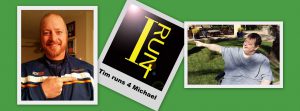
Boyle quickly found that sometimes good intentions just aren’t enough; you need something to keep you going. That’s when a chance encounter on the internet changed everything. One day, while aimlessly scrolling, Boyle stumbled on a page run by a man named Michael Wasserman. Wasserman was auctioning off his paintings, but not to make money for himself – winning bidders were requested to send the money to an organization that focused on developmental disabilities. Boyle was intrigued and sent him a friend request, not knowing that he was starting a relationship that would make a huge difference in his life and the lives of many others.
It was Wasserman who would finally give Boyle the boost he needed to get moving, and keep moving. On a particularly low day, Boyle was looking for inspirational quotes and found this one: “I run because I can. When I get tired, I remember those who can’t run, what they would give to have this simple gift I take for granted and I run harder for them. I know they would do the same for me.” He posted it to Facebook and Wasserman was the first to comment: “You can run for me anytime.”

“When I Get Tired, I Remember Those Who Can’t Run”
Michael Wasserman was born with Down Syndrome in 1961. At that time, there was no genetic screening for the disorder, and parents were encouraged to give up their newborns and send them to live in institutions. Mary Wasserman, Michael’s mother, would do nothing of the sort. Said Boyle, “when she gave birth, they pressured her hard to put him in a home and let him sit there and rot. She is one of the true pioneers in the Down Syndrome community. She has fought for more rights for parents and children, and for more of a say in what happens to them.”
Michael, who was only expected to live to see his late 20s, is now in his late 50s, and doing well, according to Boyle. He is mostly nonverbal, and confined to a wheelchair due to hip dysplasia. When he told Boyle to run because he, Michael, couldn’t, Boyle took that very seriously. He wrote back to Michael and Mary (who helps Michael to communicate), “I want to be your legs. I am going to dedicate all of my training miles and my next race to you.”
Mary was wary at first; according to Boyle, “the special needs community can be very careful and closed off. I needed people to vouch for me.” But Boyle won them over, and began sending regular updates on his progress to the Wassermans. Michael, with Mary’s help, sent Boyle regular updates on his painting and his pain management.
Eventually, as he struggled to stay inspired while running during the bitter North Dakota winter of 2013, he asked a close friend, “If I’m doing it [running for someone who can’t], do you think other people would want to do it?” That’s when he created the Facebook page I Run 4 Michael. Boyle and Mary Wasserman began reaching out to those in the running and special needs communities, matching each interested runner with a “buddy” living with a disability, and the group expanded. Eventually, the Facebook page and accompanying nonprofit organization, I Run 4, was born.
“It Doesn’t Mean That They Are Entitled to Less of a Life Than We Are”
It’s easy to see how a large portion of our population could feel left out of things. According to the CDC, approximately 1 in 4 people in the United States is living with a disability, and, of those, nearly 14% have serious mobility issues and nearly 11% have serious cognition issues. Many of the buddies that participate in I Run 4 are children, and Boyle has seen how these children’s disabilities can affect – and even isolate – families. According to Boyle, “families of children with special needs tend to feel like they’re trapped in a cocoon, even family members tend to separate themselves, parents feel trapped like they’re in a tiny little shell. I Run 4 helps families feel like there’s people out there that care, that’s what makes it so successful.” 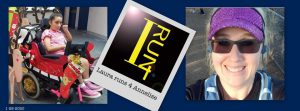
And I Run 4 has been just that – extremely successful. More than 500 people joined in the first month, and more than 15,000 in the first year. At its peak, it boasted around 45,000 people and today its membership hovers around 39,000. According to Boyle, the only reason for the drop in membership is that they simply couldn’t keep up with the demands to find buddies.
When asked how he finds so many people that want to be a part of I Run 4, Boyle said the whole process has been “organic. We’ve built up relationships with people, and it’s spread like wildfire.” As for pairing up the participants, he said that runners and buddies are randomly matched on purpose, so that people can step outside of their bubbles, and they are discouraged from bringing up their politics or religion – “We need to view others as people, not who they support,” Boyle explained. His whole worldview seems to be based on seeing people as whole beings, not just the sum of their parts.
Ultimately for Boyle, creating the group was “about fighting for inclusion. Just because someone has been given a diagnosis or doesn’t have the same brain function, doesn’t mean they are entitled to less of a life than we are.” He wants people to see beyond diagnoses and differences, and he wants to bridge divides and create meaningful relationships.
“The Catalyst”
I Run 4 has become more than Tim Boyle could have imagined. In fact, he seems slightly in awe of it. “It’s pretty surreal to be the catalyst for bringing these people together,” he said, and spoke of runners and buddies from around the world not only sending each other daily or weekly updates on each others’ lives, but also traveling across the globe just to meet up. One runner was randomly matched with a buddy with kidney failure, and was later found to be a donor match for her buddy; as of about a year ago, she was scheduled to donate her kidney to her buddy.
But Boyle wanted to emphasize that he knows he couldn’t do all of this alone. He still posts about once a week in the group, but he has stepped back from matchmaking in order to let others “get that amazing feeling.” He has a team of volunteers that he specifically wanted to mention, because, according to him, “they work their butts off, and the organization wouldn’t be anywhere without them.”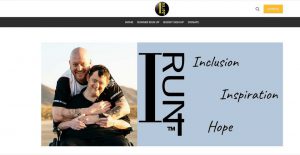
And Boyle and Wasserman’s relationship? They’re still in contact as often as they can be, and although Boyle is on a hiatus from running, he now plays softball and even mows his lawn “for Michael.” Boyle said he has been lucky enough to meet up with Wasserman in person twice. “It was surreal,” said Boyle, “it was kind of like meeting my Batman.”
How You Can Help
The runners who participate in I Run 4 do not run to raise money; in fact, there is no fundraising allowed. All Tim Boyle wants runners to raise is awareness, and they do this in all sorts of ways when they run, from wearing DIY “I Run 4” shirts and hats to sporting tattoos of their buddies. I Run 4 does, however, accept donations on their website; you can also head there to sign up to be a runner or a buddy. In addition, in honor of Michael, who participated in the Special Olympics as a child, you might want to consider getting involved in that worthwhile organization. There are also numerous organizations that support families and people with disabilities, including The Arc, Easter Seals, and Parents Helping Parents.

